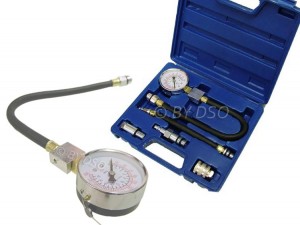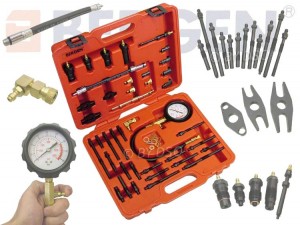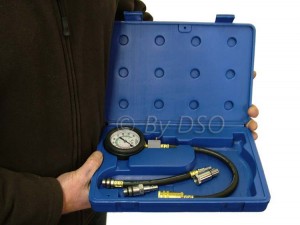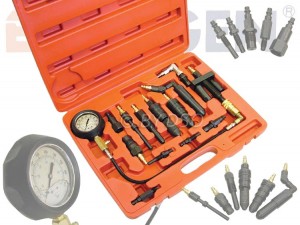The condition of your engine is important for the smooth functioning of the car. A compression test can be used to identify engine problems. The test itself is simple and you need a basic compression tester to make sure that your vehicle is in good condition.
What is Compression Testing?
The engine is a self-powered pump and compression is one of the most important factors for its functioning. For gasoline engines, a good compression reading ranges between 140 and 160 pounds per square inch. There should be no more than a 10 percent difference in the readings of the different cylinders.
What will the Compression Test Tell me?
Low compression in one of the cylinders is a common cause of concern. It usually indicates problems with the exhaust valve. If the compression is low in two adjacent cylinders, you should have concerns about bad head gasket.
Low compression in all of the cylinders could be indicative of a broken timing belt. If the engine does not start and you have high compression in some cylinders and low compression in others, you will definitely need to consult a mechanic.
Compression that is higher than the normal range can also speak of engine problems. Too much compression for a very long period of time can damage the internal structure of the engine, which will demand costly repairs in the future.
When do I Need to Run a Compression Test?
You shouldn’t wait for a problem to occur before you perform a compression test. Doing it periodically will help you make sure that the vehicle is in good condition and that the engine functions properly.
To perform a compression test, you will need to start the car. Some people wonder whether the test can be carried out, if the vehicle cannot start. If the battery can still crank, a compression test can be performed without starting the engine. In the case of “cold engine” testing, the compression reading will be lower than the specifications for the particular engine.
Tips for Performing a Compression Test
Performing the compression test accurately is essential for identifying any engine problem. You have to follow a series of simple steps.

- Buy a compression tester kit – it contains everything that you need for the procedure. Manual testers are the one generally available in automobile stores. Engine analysers are the other possibility but they are mostly used by professionals.
- Start the car and allow the engine to reach its operational temperature. Stop the engine. The next step involves removing the glow plugs or injectors. Do not touch hot engine parts or parts that are still moving. Relying on the manual provided by the vehicle manufacturer will simplify the task.
- Screw the compression tester into the glow plug hole. Disconnect the fuel shut off valve to disable the injection pump. Turn the engine over six to eight revolutions and make sure that the throttle is in the wide open position.
By this point, the tester should have recorded the highest reading for that cylinder. Release the engine pressure by pressing the bleed valve button; disconnect the tester and move on to the next cylinder.
Author – Tony Heywood

Tony Heywood is a ‘Retail Troubleshooter’ with 40 years experience in the retail industry, specialising in e-commerce over the last decade. He has his own consultancy firm and is MD of ’e sell it’, an on-line store selling tools and auto-care products worldwide. For tools & auto-care products at trade prices, please visit: www.esellit.com Or call: 020 8201 0588


